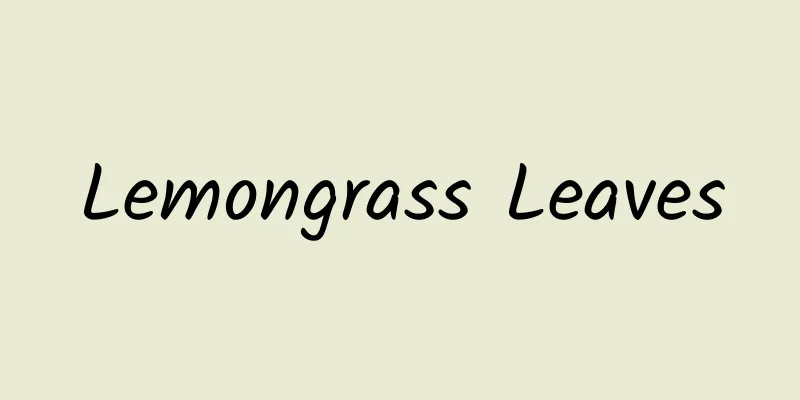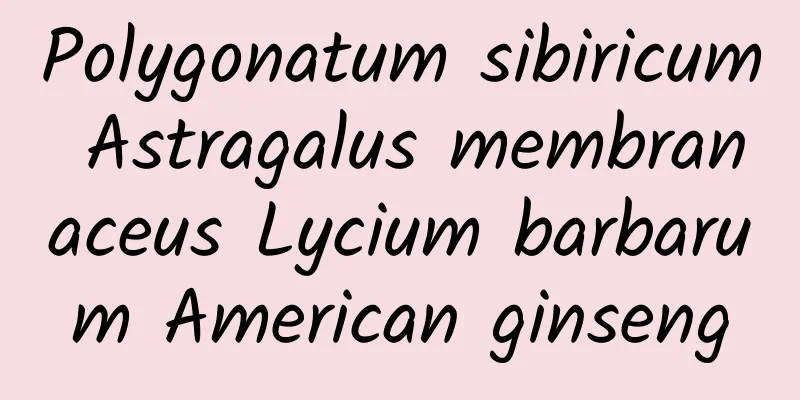Medicinal value of the star anise tree

|
Holly is also called cat thorn, tiger thorn, star anise thorn, bird-free thorn, dog bone thorn, kitten fragrance, and mouse tree. It is mainly distributed in the middle and lower reaches of the Yangtze River in my country. Because holly is evergreen and the fruits are bright red after autumn and are not easy to wither, it is used as an ornamental tree in daily life. In fact, holly is also a kind of Chinese herbal medicine which is very effective in treating hemoptysis caused by tuberculosis, kidney deficiency, tinnitus and dizziness. Shape characteristics of holly The roots are grayish white, (0.6~)1~3 meters high; rarely 8~10 meters. Young branches have longitudinal ridges and grooves, the grooves are soft or hairless, two-year-old branches are dark brown, three-year-old branches are grayish white, with longitudinal slits and protruding leaf scars, and no lenticels. The leaves are thick leathery, dimorphic, quadrangular-long circular or ovate, 4-9 cm long, 2-4 cm wide, with 3 sharp and hard thorns at the top, the central thorn is often recurved, the tip is circular or nearly truncated, with 1-2 thorns on each side, sometimes entire (this situation often occurs in ovate leaves), the leaf blade is dark green, glossy, the back is light green, dull, and glabrous on both sides. The main vein is concave on the upper side and raised on the reverse side. There are 5 or 6 pairs of lateral veins, which are reticular around the leaf margin, inconspicuous on the leaf blade, and raised on the reverse side. The reticular veins are inconspicuous on both sides; the leaf stem is 4-8 mm long, covered with narrow grooves on the upper side and softly pubescent; the bracts are callose and broadly triangular. The capitula is clustered in the petioles of biennial branches, with persistent fish scales nearly ring-shaped at the tip, covered with soft hairs and ciliates; the bracts are ovate, obtuse or with short pointed mouths at the apex, covered with short soft hairs and ciliates; the flowers are light yellow, 4 in number. Male flowers; pedicel 5-6mm long, glabrous, with 1-2 broad triangular bracts at the tip; calyx disc-like; 2.5mm in diameter, lobes membranous, broad triangular, about 0.7mm long, about 1.5mm wide, sparsely covered with soft hairs, with ciliate margins; corolla radial, 7mm in diameter, flowers oblong-ovate, 3-4mm long, folded, fused at the tip; pistil nearly as long as or slightly longer than the flower, anther oblong-ovate, about 1mm long; declining ovary nearly spherical, with obtuse or annular apex, and inconspicuous 4 lobes. Female flowers: pedicel 8-9mm long, 13-14mm in fruiting period, glabrous, with 2 small broad triangular bracts at tip; calyx and flower like male flowers; withered pistil 4/5 of flower length, slightly longer than ovary, sterile anther ovate-arrow-shaped; ovary oblong-ovoid, 3-4mm long, 2mm in diameter, column-disc-like, 4-lobed. The fruit is spherical, 8-10 mm in diameter, red when ripe, with a quadrangular persistent calyx at the tip and a persistent column disk at the top, which is prominently 4-lobed; the fruit pedicel is 8-14 mm long. There are 4 nuclei, with an obovate or elliptical outline, 7-8 mm long, about 5 mm wide on the back, covered with wrinkles and wrinkle-like pits, with a longitudinal groove in the center of the back, and endocarp bone hyperplasia. The flowering period is from April to May, and the fruiting period is from October to December. The role and efficacy of holly 1. The role of holly Holly leaves: hemoptysis due to pulmonary tuberculosis, kidney qi deficiency, tinnitus, dizziness, and pain in the waist and knees. Holly fruit: Qi and blood deficiency, low-grade fever, menorrhagia, abnormal leucorrhea, and diarrhea. Holly root: joint pain. 2. The efficacy of holly 1. Effect of lowering blood lipids: The water extract of holly leaves can greatly increase the protein metabolism of normal rats, making the protein level and transport system in a good state, and has a good prevention effect on the occurrence of hyperlipidemia. 2. Antibacterial effect: The purified substance of holly leaves has certain antibacterial specificity against Staphylococcus aureus, Salmonella and Escherichia coli. The alcohol extract, butyl acetate extract and n-butanol extract of holly leaves have very good inhibitory effects on two shallow standard pathogenic bacteria, Candida albicans and Candida glabrata. 3. Anti-pregnancy effect: Holly has a good contraceptive effect. Experimental mice were fed with holly decoction, and the results showed that holly could reduce the fertility of experimental mice. The alcohol extract of Ilex kudingcha leaves has a contraceptive effect, and the toluene extract can stop early pregnancy in mice by subcutaneous injection; abdominal injection has the effect of stopping early, mid- and late pregnancy in mice, while oral administration has no significant effect on early and mid-pregnancy in mice, and abdominal injection in rats also has an anti-early pregnancy effect. 4. Medicinal value of individual compounds: Holly contains a lot of ursolic acid. Existing scientific research has confirmed that ursolic acid has a variety of microbial effects such as sedative, anti-inflammatory, antibacterial, anti-diabetic, anti-ulcer and hypoglycemic. In recent years, it has been found that ursolic acid has obvious effects of enhancing immunity, anti-carcinogens, anti-cancer, inducing F9 teratoma cell differentiation and anti-angiogenesis. Holly leaves contain quercetin and hyperoside, which have strong analgesic, increased brain blood volume and anti-cerebral ischemic damage effects. Studies on the isolated compounds showed that citric acid 4 had no protective effect on atrial fibrillation induced by hypoxia and chloroform in mice, but had a certain protective effect on myocardial ischemia induced by vasopressin in rats and could significantly increase the heart's contraction force. Adenosine separated from holly ethanol extract has a promoting effect on coronary blood flow, and 3,4-dicaffeoyl-caffeic acid has a significant promoting effect on the release of male prostaglandin (PGI2). |
<<: The medicinal effects of Illicium thornyum
>>: The benefits of saffron for women
Recommend
The efficacy and function of Qingxiang Gui
Do you know what Qingxianggui is? If you know, do...
Chinese scientists discovered: Enceladus may have "phosphorus for life"!
Enceladus is one of the most likely extraterrestr...
The efficacy and function of wild rabbit hair
Wild rabbit hair is a medicinal material. If we h...
If centipede poison is used to poison centipedes, will the centipede be killed by the poison? | Expo Daily
Your best "insider" in the scientific c...
I'm already full, so why can't I control my mouth?
There are two things that are difficult for human...
What are the effects of American ginseng tablets?
American ginseng is a kind of health care product...
econsultancy: Mobile users' shopping frequency and spending are still low
According to Econsultancy, email and search are t...
Why can't you hit the fly?
In the kitchen or restaurant, you can always hear...
The efficacy and function of hollow flower
There are so many medicinal herbs in the world, a...
The efficacy and function of golden lotus
In our lives, Nasturtium has attracted our attent...
The efficacy and function of Cercidiphyllum
Most Chinese medicinal materials have good effect...
On the surface, everything seems calm, but secretly he is going crazy! Who is keeping his emotions stable?
“Be an emotionally stable person” Gradually becom...
The efficacy and function of chicken kidney skin
Chicken kidney skin is also called chicken gizzar...
The efficacy and function of the gold belt
Traditional Chinese medicine is very effective in...









